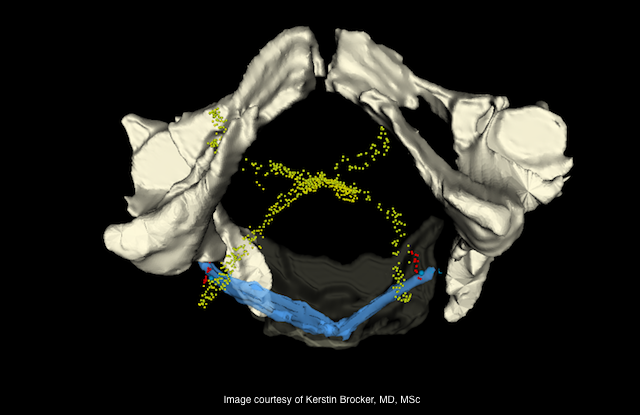Article
Combined imaging technique feasible in POP repair
Author(s):
Reconstruction of anterior compartment defects using magnetic resonance-visible vaginal mesh implants in combination with post-surgical three-dimensional imaging is feasible and yields reproducible results, researchers report.
The reconstruction of anterior compartment defects using magnetic resonance (MR)-visible vaginal mesh implants in combination with post-surgical three-dimensional (3-D) imaging is feasible and yields reproducible results, Kerstin Brocker, MD, MSc, reported at the 2017 International Continence Society annual meeting in Florence, Italy.
Results to date suggest “this technique works very well,” said Dr. Brocker, of the department of obstetrics and gynecology, Heidelberg University Hospital, Heidelberg, Germany. “It gives us an option to 3-dimensionally recognize what actually happened to the mesh after it was implanted.”
Also see - SUI: Phase III data offer lessons for trials evaluating cell therapy
Dr. Brocker reported results based on six women who have been treated in a proof-of-concept multicenter study. All subjects had symptomatic Pelvic Organ Prolapse Quantification System (POP-Q) grade III cystoceles.
They were treated with the partially absorbable anterior vaginal propylene mesh, which is MR-visible due to an iron compound that is applied to its surface. The mesh has six fixational arms, including middle and anterior arms that are placed through the obturator foramen, and posterior arms that are fixed in the sacrospinous ligaments.
The procedures were successful in all six women, and on follow-up examinations at 3 months and 1 year post-procedure, there were no adverse events, erosion, dyspareunia, or recurrent cystoceles, according to Dr. Brocker.
Next: How it works
The 3-D reconstruction of the mesh implant and nearby anatomical structures (see image) are developed using 3-D Slicer, an open source software platform for medical image informatics, and are based on static MR images obtained before surgery and then again after the procedure.
Using MR images obtained at 3 months, researchers were able to 3-D-reconstruct the course of the mesh and its arms in the pelvis in five out of six subjects, Dr. Brocker noted. Using 1-year MRIs, they were able to produce images of satisfactory quality for two of the subjects.

Caudal view of a 3-D reconstruction of the female pelvis after anterior vaginal mesh repair. Yellow dots mark the implanted MR-visible six-arm mesh. Sacrospinous ligaments are marked blue, and pudendal nerve/vessel bundle is marked with red dots.
Being able to see the actual position of the implant and its distance from nerves, vessels, and other surrounding structures is one of the key advantages of using an MR-visible mesh, Dr. Brocker said. In addition, the visibility provided by the technique might allow for better planning of revision surgeries, and may help in managing complications.
Dr. Brocker helped develop the mesh, and in an interview with Urology Times, said that part of the reason for exploring the concept of visible meshes related to concerns that had been raised regarding vaginal mesh implants.
Read: Vaginoplasty and the role of autologous buccal mucosa
In January 2016, the FDA strengthened its data requirements for manufacturers to help to address the significant risks associated with surgical mesh for repair of pelvic organ prolapse.
As a next step in research, Dr. Brocker and colleagues plan to evaluate MR-visible meshes of different sizes and dimensions to determine any potential differences on 3-D-reconstruction or clinical outcomes.
Dr. Brocker said she hopes her group’s results will encourage others “not to be scared of the method... Using an MR-visible mesh in further research can help us better understand how alloplastic materials work in the female pelvic floor.”
Dr. Brocker’s presentation was awarded the Best in Category Prize in Imaging at the ICS meeting. The research represented a collaboration between investigators at the University of Heidelberg and the University of Michigan, Ann Arbor.
Dr. Brocker has received speaking honoraria and research funding from Serag Wiessner (Naila, Germany), though none of those funds were used to fund this trial.
More from Urology Times:
Urology, gynecology collaboration addresses rising demand
Top 5 bladder cancer articles of 2017
When can modifier –25 be used with an E/M code?
To get weekly news from the leading news source for urologists, subscribe to the Urology Times eNews.
Newsletter
Stay current with the latest urology news and practice-changing insights — sign up now for the essential updates every urologist needs.














